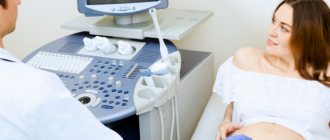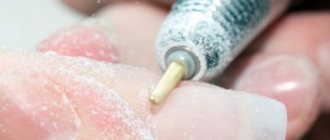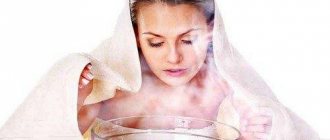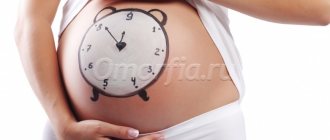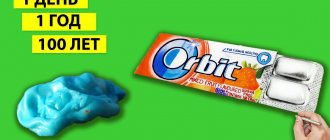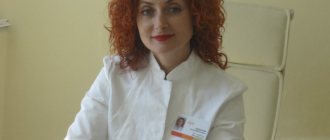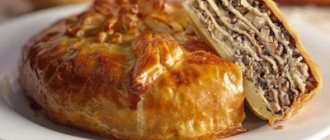Peculiarities
The “cuckoo” ENT procedure was developed by American otorhinolaryngologist A.V. Proetz. Its essence lies in the introduction of a medicine into one nasal passage, which comes out of the other along with the contents of the sinuses (mucus, pus, etc.). This occurs due to the difference in pressure levels. Due to its operating principle, this method of therapy is also called Proetz vacuum fluid transfer.
During the procedure, the infected contents should not penetrate the trachea and bronchi, which can happen if it gets into the throat. To avoid such a situation, the patient must continuously say “ku-ku” while washing, while maintaining even breathing. Due to this, the “cuckoo” ENT procedure has its name.
Its implementation is not associated with pain, and relief occurs after the first session.
Features of the procedure
Only a doctor should perform such rinsing. If you try to rinse your nose at home this way, you may end up with complications instead of benefit. It is also very important that the procedure is carried out only when necessary.

The main cases when a cuckoo test is required include:
- runny nose of any origin,
- sinusitis,
- sinusitis,
- frontitis,
- adenoiditis.
Thanks to this method of exposure, it is possible to reduce the manifestation of many unfavorable symptoms of the disease. Since during the “cuckoo” it is possible to remove mucus and pus from the nasal sinuses, it becomes possible to refuse punctures for sinusitis.
In addition, this procedure allows you to deliver the antibiotic to the site of the pathological process.
There are very few contraindications for this method of treatment, but those that exist must be taken into account. This:
- patient age up to 5 years,
- tendency to nosebleeds,
- presence of epilepsy.
Any of these cases assume that the patient will not be able to maintain normal, calm breathing during the procedure, which will reduce its effectiveness and also create a risk of complications. Pregnant women can undergo this procedure, but it must be prescribed by a doctor, taking into account all the risks.
Possible side effects
Despite the good results, sometimes the procedure has to be abandoned due to severe side effects. It must be said that if the technique is followed, they rarely occur. However, a reaction may occur to the mechanical impact and the introduced medicine, which is expressed in the following symptoms:
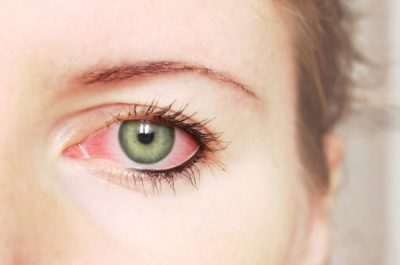
redness of the eyes,- burning,
- pressure in the nasal cavity,
- minor nosebleeds,
- sneezing,
- vomiting (occurs in children during the first procedure).
These phenomena are considered normal, but if they occur, it is worth talking to your doctor to make sure that they are not signs of abnormalities.
Complications after the “cuckoo” are possible only if the doctor who performed the procedure is insufficiently qualified. They are usually caused by the drug entering the Eustachian tube, resulting in an inflammatory process there. In addition, the disease, if treated incorrectly using this method, may worsen as the infection spreads further.
Positive Impact
The “cuckoo” ENT procedure is prescribed not only for the treatment of existing diseases, but also for their prevention.
The action of the solution containing the drug and the simultaneous removal of the contents of the nasal sinuses ensure:
- elimination of swelling of the mucous membrane;
- reducing the severity of the inflammatory process;
- increased vascular tone;
- restoration of the sense of smell;
- cleansing the mucous membrane, thereby strengthening its protective function;
- elimination of itching and sneezing;
- stopping increased secretion from the nose.
The severity of symptoms of ENT diseases decreases after the first procedure. The high efficiency of the method eliminates the need for a puncture for frontal sinusitis and sinusitis, if the stage of their course is not advanced.
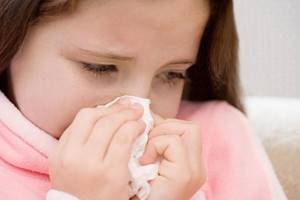
Indications
You can undergo the “cuckoo” procedure at an ENT specialist if you have the following diseases and conditions:
- Impaired outflow of infected contents during inflammatory processes, resulting from a deviated nasal septum.
- Adenoiditis is a pathology characterized by the proliferation of lymphoid tissue that makes up the tonsils.
- Rhinitis, including allergic.
- Benign growth of nasal mucous tissue.
- Acute and chronic tonsillitis is an inflammatory infectious process that occurs in the palatine and pharyngeal tonsils.
- Sinusitis. It is one of the types of sinusitis. It is an inflammatory process that occurs in the maxillary sinuses of the nose.
- Frontit. It is also a type of sinusitis. This is a disease that affects the mucous membrane of the frontal sinus.
- Ethmoiditis is an inflammatory process that occurs in the epithelium of the cells of the ethmoid bone.
This list of indications can be expanded during an individual consultation with a doctor. He also decides on the advisability of prescribing the “cuckoo” ENT procedure to children.
Nasal rinsing method
Nasal rinsing is a therapeutic procedure. It is used for runny nose, sinusitis (sinusitis). It helps avoid punctures and cope with chronic diseases. The “cuckoo” procedure or the Proetz washing method was invented at the beginning of the last century. It is still considered effective and is used in domestic ENT practice.
Indications for use
The procedure may be recommended in the following cases:
- Sinusitis with a protracted or chronic course.
- Inflammation of the nasal sinuses when the nasal septum is deviated, which prevents the outflow of liquid contents and pus.
- Adenoiditis is inflammation of the pharyngeal tonsil. The disease often occurs in childhood.
- Adenoids are a pathological growth of the pharyngeal tonsil associated with hypertrophy of lymphatic tissue.
- Runny nose of any nature, including allergic.
Nasal rinsing using the “cuckoo” method is most often prescribed for chronic processes , when the patient has already completed a course of systemic antibiotics or antiviral drugs, but the disease still returns. The next measure after the “cuckoo” is puncture of the sinuses for the purpose of direct administration of the drug and immunocorrection. In rare cases, surgery may be required.
The essence of the method
The “cuckoo” procedure owes its name to the sounds that the patient must make during rinsing. Its full name is “the Proetz method of moving drugs in the nasal cavity,” after its creator.
To carry it out, the patient is placed on a couch and vasoconstrictor drugs are instilled. Sometimes local anesthesia is additionally used. The head tilts down at an angle of 45° to the body. Children are held in the arms of a doctor or one of the parents. The second person holds the baby’s hands so that he does not interfere with the procedure.
In a clinic setting, rinsing is performed in a sitting position for adult patients. In his hands he has a tray into which liquid with pus is removed. Both a doctor and a nurse can perform the procedure.
An antiseptic solution, antibiotics or medications with an antihistamine effect are used as a remedy. A syringe without a needle or a special catheter is inserted into one nostril of the patient, and a vacuum suction is inserted into the other. Sometimes olive oil is used as a washing apparatus.
The total procedure time is about 10 minutes. With constant pressure, a medicinal solution is pumped into the nostrils and sinuses. The patient is asked to say “ku-ku” while exhaling to prevent liquid from entering the throat. Suction removes the liquid along with the pathological contents.
Then the procedure is repeated for the second nostril.
It is important to keep your head level during the procedure, otherwise the solution with pus may get into your mouth. This causes a reflexive desire to cough, lengthens the washing process, and makes it more unpleasant.
In addition, this sometimes leads to the spread of infection. In any case, it is better to take a handkerchief or napkin with you to spit out any remaining liquid that gets into your mouth.
It is not advisable to swallow it; the frequently used solution of furatsilin is not beneficial for the gastrointestinal tract.
After finishing washing, you need to get up without sudden movements. It is better not to go outside for 10-60 minutes. This is necessary so that the remaining fluid flows out and the mucous membrane begins to function.
The number of procedures is determined by the doctor. Typically 5 to 10 washes are necessary. The doctor suggests stopping the course when purulent contents cease to be discharged from the nose and the medicinal solution comes out clean.
Carrying out Proetz rinsing at home
This method is not suitable for independent use. It is designed for experienced specialists who will prevent the reflux of fluid with pus into the cavity of the middle ear or oropharynx. At home, it is better to limit yourself to simple rinsing or using pharmaceutical irrigators, such as Dolphin, specially designed for independent use.
People without experience should decide to rinse with Proetz if there are no other alternatives. In this case, instead of vacuum suction, use a conventional large-volume syringe.
You must act carefully, trying to create the same fluid pressure throughout the entire procedure. The solution must be heated to a comfortable temperature – 35°-40°.
The optimal volume of liquid for pumping into one nostril is 5-20 ml.
Important! At home, you should try to get as close as possible to sterile conditions. To do this, it is better to purchase new syringes and open them only before use; to prepare the solution, use freshly boiled or sterile water.
Contraindications
The method does not apply in the following cases:
- Early age of the patient. If the child is not able to perceive the doctor’s instructions, then rinsing the nose using the “cuckoo” method is fraught with complications due to the reflux of fluid into neighboring sections and cavities.
- Circulatory disorders in the vertebral arteries.
- Diseases of the cervical spine. Like the previous one, this pathological condition can make it difficult for the patient to remain for a long time with a motionless neck and head tilted back.
It is necessary to pay special attention to additional contraindications of drugs. Some of them can penetrate into the blood, which is dangerous during pregnancy and lactation. Others, mainly of plant origin, provoke allergies, so it is better not to use them for this disease.
Before performing the “cuckoo” procedure, the doctor must find out the presence of all chronic pathologies and find out about the medications taken. If it seems to you that he did not take into account all the factors, do not hesitate to clarify the possibility of additional washing in your situation.
Pros and cons: opinions of doctors and patients
ENT specialists who have worked in the clinic for a long time and practice various treatment methods note the following negative aspects of the Proetz lavage method:
- Its effectiveness is definitely lower than that of a puncture.
- In many ways, preventing the spread of infection depends on the doctor’s skills and compliance with the technique of the procedure. There is a risk of developing a sore throat, otitis media or even pneumonia.
- Some patients claim that punctures are less painful than rinsing the sinuses, especially in children.
- The “cuckoo” method is aphysiological. This means that such procedures can disrupt the natural functioning of the mucous membrane, which will subsequently result in more severe problems than sinusitis.
- Patients report discomfort during the procedure, dizziness and nausea after the procedure. For some, it causes nosebleeds.
Proponents of the method usually talk about the following advantages:
- Drainage – removal of liquid secretion, which the procedure provides, improves the patient’s condition and reduces the source of infection.
- Rinsing avoids puncture and delivers medications to the site of inflammation. This is usually psychologically easier for the patient.
- When staying in a hospital, the ability to do without a puncture reduces the risk of infection with persistent and dangerous representatives of the hospital microflora.
- Rinsing improves nasal breathing without the use of vasoconstrictor drugs, which can cause atrophy or hypertrophy of the mucosa.
- A 2007 study of children confirmed a decrease in colds in a group of people who practiced flushing using different methods.
- Many who have gone through the Proetz journey note its high efficiency. However, the method does not help people with serious immune disorders.
An important advantage of the “Cuckoo” wash is the possibility of its use during pregnancy, high fever, and allergies.
There is a fee for the procedure. The price of one session is 200-1000 rubles, depending on the clinic and region . Some patients find this cost affordable, others find it high.
Proetz fluid transfer must be prescribed by a specialist. Only a doctor can decide which method is most justified in a given situation. Most experts consider it unnecessary to carry out the procedure for preventive and hygienic purposes. It is better to allow the mucous membrane to cleanse itself and not interfere with its work.
Contraindications
Like any other treatment method, hydrovacuum therapy has a number of limitations.
The procedure is prohibited if the following contraindications exist:
- The child has not reached the age of 5 years. This is due to the ineffectiveness of lavage using the Proetz method due to the anatomical features of the sinuses in young children. In addition, they cannot always control themselves during the process and follow recommendations, which increases the risk of complications and reduces the positive effect of the procedure to zero.
- Circulatory disorders and various pathologies of the cervical spine. In this case, it is difficult or even impossible for the child to remain motionless for a long time with his head thrown back.
- Tendency to nosebleeds.
- Psycho-emotional disorders.
- Epilepsy.
Also, before washing, the specialist must make sure that there is no allergy to the medications that he will administer during the process.
Judging by medical reviews, the “cuckoo” ENT procedure is also effective for pregnant and lactating women. However, some medications used penetrate into the bloodstream, which can harm the child. Before hydrovacuum therapy, you must tell your doctor if you are pregnant or breastfeeding.
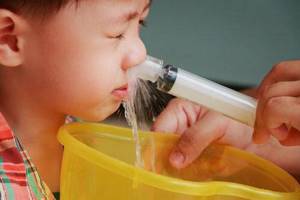
Psychological preparation for the procedure:
Nasal rinsing using the cuckoo procedure can be very frightening for young children. To prevent this from happening, you should first prepare the baby and tell him about what will happen.
The child should have an understanding of what a “cuckoo” is and why it is made. It is important to point out that such treatment can relieve the disease and it is possible to avoid a puncture.
There is no need to scream or force the little man. There will be several more procedures, and each time such trips to the hospital will infuriate the adults and traumatize the child’s psyche. The conversation about the feasibility of the event should be friendly. It is recommended to involve your attending physician.
You need to say that:
- it does not hurt;
- a hum will be heard from the operating device;
- you need to lie still, not disturb the doctor and do everything that is required.
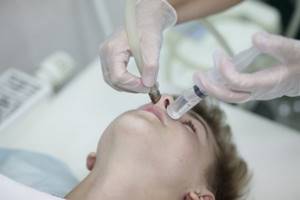
This approach will definitely give a positive result and will not cause panic in the child.
After rinsing your nose using the “cuckoo” method, you should follow some rules:
- do not overcool;
- hold off on physical activity for an hour;
- sit for about half an hour with your head slightly lowered;
- when carrying out the “cuckoo” in winter, you cannot go out into the cold air for an hour and a half, in the warm period - no earlier than half an hour.
The doctor can prescribe either 5 or 10 procedures. It all depends on the severity of the pathological process.
Methodology
Proetz nasal lavage is performed according to the following algorithm:
- Preparation. 15-20 minutes before the start of the procedure, parents or a doctor drop vasoconstrictor drops into the child’s nose. By eliminating swelling of the mucous membrane, the effectiveness of drugs increases, as they penetrate the tissue better. As a rule, the following drugs are dripped into the nose of children: “Nazol”, “Tizin”, “Nazivin”, “Otrivin”, “Farmazolin”, “DlyaNos”, “Sanorin”, “Oxymetazoline”. Neglecting preparation leads to discomfort during rinsing. Judging by the reviews, the “cuckoo” ENT procedure can even cause pain for children if they do not first drip a vasoconstrictor into their nose. If a child is intolerant to a particular drug, it must be replaced with another.
- Choice of antiseptic. The purpose of the solution used during the procedure is to reduce the number of pathogens and prevent them from moving to healthy tissue. The most commonly used drugs are: Furacilin, Cefatoxime, Chlorhexidine, Miramistin. Antibiotics or antihistamines can also be used if indicated.
- Washing. The child lies down on the couch. A special cushion is placed under his neck so that he can tilt his head back approximately 45 degrees. It is also allowed for one of the parents to hold the child in their arms in order to reduce the degree of psychological discomfort in the little patient and, if necessary, to prevent him from disrupting the process with his hands. A syringe without a needle, filled with medicine, is inserted into one nasal passage, and into the other - a special tube connected to a vacuum suction, designed to extract mucus, pus, etc. Next, the washing process starts: with constant pressure, a solution flows into one nasal passage, and from the other releases the contents of the sinuses. To ensure that neither one nor the other gets into the throat, the child must say: “Ku-ku” with each exhalation. After about 5 minutes, the procedure is repeated for the other nasal passage. During rinsing, the child must keep his head still to avoid liquid entering the oral cavity and prolonging the process.
- The final stage. After finishing the hydrovacuum therapy session, it is necessary to spit out the liquid that got into the mouth (not all children have a perfect procedure). It is not advisable to swallow it, as some medications have a negative effect on the gastrointestinal tract. In addition, it promotes the movement of pathogenic microorganisms. It is necessary to rise from the couch slowly, without making sudden movements. It is recommended not to go outside for about half an hour.
How to make a “cuckoo”?
Having familiarized yourself with all the indications and contraindications for the “cuckoo” procedure, you can now find out how to do it correctly.
- The patient is placed on the couch so that he lies freely on his back, with his head tilted 45 degrees.
- The doctor inserts a syringe with liquid for rinsing into one nasal passage, and into the other - a special tube with a pump that will suck out the waste liquid.
- The entire procedure for rinsing the nasal cavity is carried out smoothly, without creating excess pressure inside the nose and sudden fluctuations in the fluid. And the patient must “cuckoo” all the time.
It is important to know that nasal rinsing is carried out only with warm solutions. After the cuckoo, you can’t go outside immediately to avoid catching a cold. The patient can go home 30 minutes after the procedure in the warm summer months and 2 hours later in the cold season
The main method of treatment with “cuckoo”
Sometimes the “cuckoo” is used as the main method of treating sinusitis, avoiding punctures of the maxillary sinus. To ensure that cavities are rinsed as efficiently as possible and help fight infectious bacteria, doctors use several types of drugs:
Vasoconstrictor drops
They are necessarily used in cases where the patient has a very stuffy nose. Such remedies help relieve swelling and open the nasal passages. Pharmacy drops Naphthyzin, Nasorex, etc. are suitable for this. If you do not use drugs to narrow the blood vessels before the “cuckoo” procedure, the rinsing itself will become painful and unpleasant.
Antiseptics
The ENT can use any antiseptic drugs. The most popular are Furacilin, Miramistin, etc. These products prevent bacteria from growing and multiplying inside the nose and sinuses.
Medicinal solutions
Sometimes a doctor can make cuckoo without using antibiotics, but by replacing antiseptics with herbal infusions or saline solution.
How many “cuckoos” do you need to do for sinusitis?
Despite the fact that the washing procedure is not painful or traumatic, many patients have a negative attitude towards this method of therapy after the first “cuckoo”. Why? The fact is that getting any liquid into the nose has an unpleasant effect, and patients may not like rinsing in itself. And, if the antiseptic solution also contributes to irritation of the mucous membranes of the nose and eyes, then the “cuckoo” becomes even more unpleasant.
But don’t be afraid, because the washing procedure only needs to be done 4-10 times. Moreover, as experienced patients say, each subsequent cuckoo is much easier to tolerate than the first. In addition, the patient himself learns to relax during the procedure, which ensures his comfortable state.
Washing at home
Therapy according to the Proetz method should be carried out by experienced specialists. During a cuckoo ENT procedure at home, it is extremely difficult to prevent fluid from entering the mouth or middle ear. An alternative is regular rinsing. You can also purchase an irrigator at the pharmacy, which is designed specifically for home use.
If for some reason this is not possible, a procedure similar to hydrovacuum therapy can be performed. To do this, you need to buy disposable syringes and prepare a solution using sterile water. A syringe can play the role of a vacuum suction. A syringe without a needle must be filled with a solution heated to 35 0C and inserted into one nasal passage. You need to bring the tip of the syringe to the other and start rinsing. Each nostril should receive 5-6 injections of 20 ml of the drug. During the process, it is necessary to maintain the same pressure. Also, the patient should not forget to say: “Ku-ku” with each exhalation.
Nasal rinsing using the “cuckoo” method: we talk about the features and effect of the procedure
Infectious diseases of the upper respiratory tract have very unpleasant symptoms that significantly reduce the patient’s quality of life. Competent and, what is important, timely treatment will help you get rid of these symptoms.
As a rule, in such cases, complex therapy is prescribed, which includes both drug treatment and physiotherapy. One of the most effective and safest methods is the so-called “cuckoo” procedure - rinsing the nose. The price of such a procedure is affordable, and the effect will not keep you waiting long.
In this article we will look at who is recommended for this type of nasal lavage, how the procedure is carried out and how to prepare for it.
For what diseases is rinsing performed?
The procedure for rinsing the nose using this method is indicated for most diseases of the upper respiratory tract. To determine the type of disease, a consultation with an ENT specialist is necessary, after which diagnostic procedures may also be necessary. One of the most effective is endoscopic examination.
In particular, these are:
- various types of sinusitis;
- long-term rhinitis (especially vasomotor rhinitis, the symptoms and treatment of which are especially complex, since mucus is formed not only in the sinuses, but also fills the lower turbinates);
- rhinitis caused by allergic manifestations (washing allows you to “remove” the allergen from the respiratory tract and thus alleviate the patient’s condition);
- polypous manifestations of rhinosinusitis (allows you to relieve inflammation and cleanse the nasopharynx).
This method is considered safe, as evidenced, in particular, by the fact that even pregnant women are helped to cope with the disease in this way. It is also indicated for children, but due to the special method of its implementation, it is not performed on children under 3 years of age.
This is due solely to the fact that in the youngest patients the structure of the nasal cavity will not allow the procedure to be carried out according to all the rules, which means it will simply be ineffective.
In addition, washing requires a certain sequence of actions from the patient, which is impossible to explain to children.
Cuckoo method: contraindications
In addition to age, there are also physiological contraindications in which this considered safe method can lead to serious consequences. These include:
- nosebleeds (both occurring at the time of the procedure and frequently recurring);
- poor blood clotting;
- structural features of the new cavity (for example, significant curvature of the septum, which will impede the passage of injected solutions);
- complex forms of polyposis;
- severe swelling of the nasal mucosa;
- increased body temperature;
- epilepsy;
- mental illness.
How is the procedure performed?
The essence of nasal rinsing in the clinic is to remove mucus and purulent formations from the sinuses, which will help relieve swelling, improve breathing and alleviate the condition in general. Together with the mucous masses, harmful microorganisms and dust deposits are removed, which in general also affects getting rid of the infectious disease.
During the procedure, the patient is positioned in a semi-recumbent position with his head slightly tilted back. To make rinsing the sinuses more comfortable and painless, they are irrigated with an anesthetic at the patient’s request.
Local anesthesia is not harmful and greatly facilitates the procedure and allows it to be carried out more effectively: even slight discomfort and a feeling of strong pressure in the nose are eliminated in this case, which means that the patient will not stir his head, which is one of the important conditions for a high-quality procedure.
ENT clinics in Moscow, as a rule, have the equipment necessary for the procedure.
A special device - a vacuum aspirator - is placed in one of the nostrils, and a liquid is slowly introduced into the other nasal passage - medicinal antiseptic solutions pre-selected in composition.
Under pressure, the antiseptic passes through the sinuses, and the aspirator “pumps it out,” removing mucous and purulent formations along with the healing fluid. A similar manipulation is performed with the other nasal passage.
During the procedure, the patient continuously makes a sound reminiscent of “cuckoo”. This simple manipulation allows you to prevent fluid with pus, mucus and harmful microorganisms from passing into the pharynx. The process occurs due to the raising of the upper palate when pronouncing this sound, which blocks the passage of the solution.
The choice of drug depends on the problem that washing should help to cope with.
- If the disease is caused by bacteria, the solution will contain an antibiotic, which will not only remove unnecessary fluid from the nasal cavity, but will also prevent the proliferation of harmful microorganisms of a bacterial nature.
- For symptoms caused by viruses or diseases of unknown etiology, antiseptic solutions are used.
- If breathing problems are allergic in nature, antihistamines will be added to the rinse liquid.
- If there is significant swelling of the mucous membrane, the doctor uses vasoconstrictor and decongestant solutions to alleviate the condition.
How long does the procedure take and how many sessions are needed?
The time of the procedure depends on the type of disease and the degree of its neglect. The rinsing is completed at the moment when the pumped out liquid acquires a transparent color - without turbidity from mucus and impurities in the form of purulent plugs. This is an individual process, but, as a rule, it takes no more than 15-20 minutes.
The number of sessions is also individual and depends on the disease and physiological characteristics of the patient. It is worth understanding that one procedure is not enough, but after the first time the patient will feel a significant improvement in his condition.
At the same time, it is important to complete the course, which guarantees a complete recovery. The course may include from 3 to 7 procedures. The exact number can only be determined by an ENT consultation.
An important fact: each procedure, due to the fact that the swelling of the mucous membrane decreases, is easier and discomfort is reduced.
Recommendations after the procedure
If the procedure is carried out in the cold season, after it has been carried out for several hours, it is not recommended to stay in cold air for a long time, as this can cause hypothermia and deterioration of the condition.
Immediately after rinsing, you should not stand up suddenly - against this background, a surge in pressure may occur and nosebleeds may occur.
An important recommendation is to complete the treatment. Often, after the first or several procedures, the patient feels significant relief and decides to stop the procedures.
However, this feeling is often deceptive, and visible improvement in condition does not actually guarantee complete recovery. In this case, it is better to make an appointment with the ENT specialist again.
In addition, it is also important to follow all the doctor’s recommendations for complex treatment.
In general, the procedure, when carried out correctly, eliminates any unpleasant consequences, but an important condition here is its professional execution.
This seemingly simple manipulation nevertheless requires experience and high qualifications from the doctor, so patients should carefully choose a clinic where nasal rinsing will be performed.
The price for the procedure in Moscow may vary, but in general it is quite affordable, especially considering the quick effect that the procedure achieves.
For the same reason, it is not recommended to carry out such a serious procedure at home. It is better to use sprays to alleviate the condition, which also need to be selected taking into account the doctor’s instructions. You can read about other types of nose examination and treatment here.
Possible complications after nasal rinsing
In general, “cuckoo” nasal rinsing is safe and does not cause serious complications. However, during the procedure some unpleasant symptoms may still appear. These include:
- Sneezing;
- The appearance of a nagging headache;
- Feeling of fullness in the ears;
- Bleeding from the nose;
- Redness of the eyes;
- One-time vomiting (immediately after the procedure).
If the procedure is carried out unprofessionally or the patient does not follow the doctor’s recommendations when rinsing with head position, even breathing, or making a sound similar to “cuckoo” (hence the name of the method), the liquid may enter the pharynx or auditory tube, which can provoke otitis media. (inflammatory process in the ear).
Therefore, if after the procedure the inside of the ear hurts , this is a sure sign that it was performed incorrectly. That is why the choice of an ENT clinic and the qualifications of the doctor who performs the rinsing are of key importance.
An incorrectly used technique will not only not improve the condition, but can also lead to complications or the appearance of other diseases.
General conclusions about the procedure
Most people underestimate the consequences that a seemingly trivial runny nose can lead to.
Meanwhile, any otolaryngologist in Moscow will confirm that if treated incorrectly, rhinitis very often develops into much more severe diseases - both in terms of symptoms and in terms of the complexity of treatment. These include, in particular, sinusitis, sinusitis and other ENT diseases.
For example, acute sinusitis, which is usually difficult to treat, occurs in most cases due to the fact that the ducts through which fluid is removed from the cavity are blocked. And inside this “plug” microorganisms begin to multiply, causing an inflammatory process.
Removing this “blockage,” which occurs during nasal rinsing in the clinic , allows you to begin getting rid of the problem. Naturally, “cuckoo” nasal rinsing is not a panacea, and this procedure alone will not cure the disease completely.
But as part of complex therapy, which also usually includes drug treatment and the use of various sprays, it helps, firstly, to quickly relieve the main unpleasant symptoms and improve the patient’s condition. Secondly, “extract” bacteria and viruses from the body that provoke the development of the disease.
Source: https://LevRudin.ru/poleznye-stati/73-promyvanie-nosa-metodom-kukushka-rasskazyvaem-ob-osobennostyakh-i-effekte-protsedury
Side effects
After performing the sinus lavage procedure using the Proetz method, the following conditions may occur:
- nose bleed;
- mild headache;
- slight congestion in the ear canals;
- burning in the nose;
- sneezing;
- redness of the eyes.
In rare cases, liquid getting into the throat can cause vomiting. These conditions are not pathological and do not require emergency medical care. After some time they will disappear on their own.
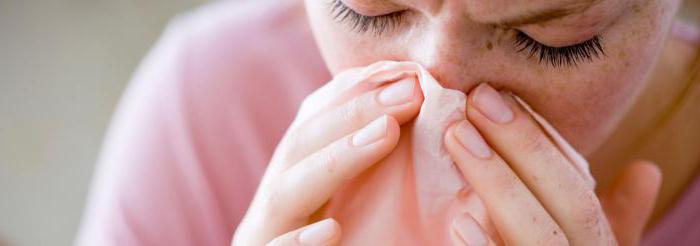
Complications
The procedure involves the use of medical instruments. If they are used carelessly, the mucous membrane may be injured.
Also, the consequence of non-compliance with the rules of preparation and conduct of the procedure may be:
- complications of sinusitis;
- otitis;
- Eustachitis.
To avoid negative consequences, you should contact only an experienced specialist, since the safety of the procedure largely depends on his skills.

